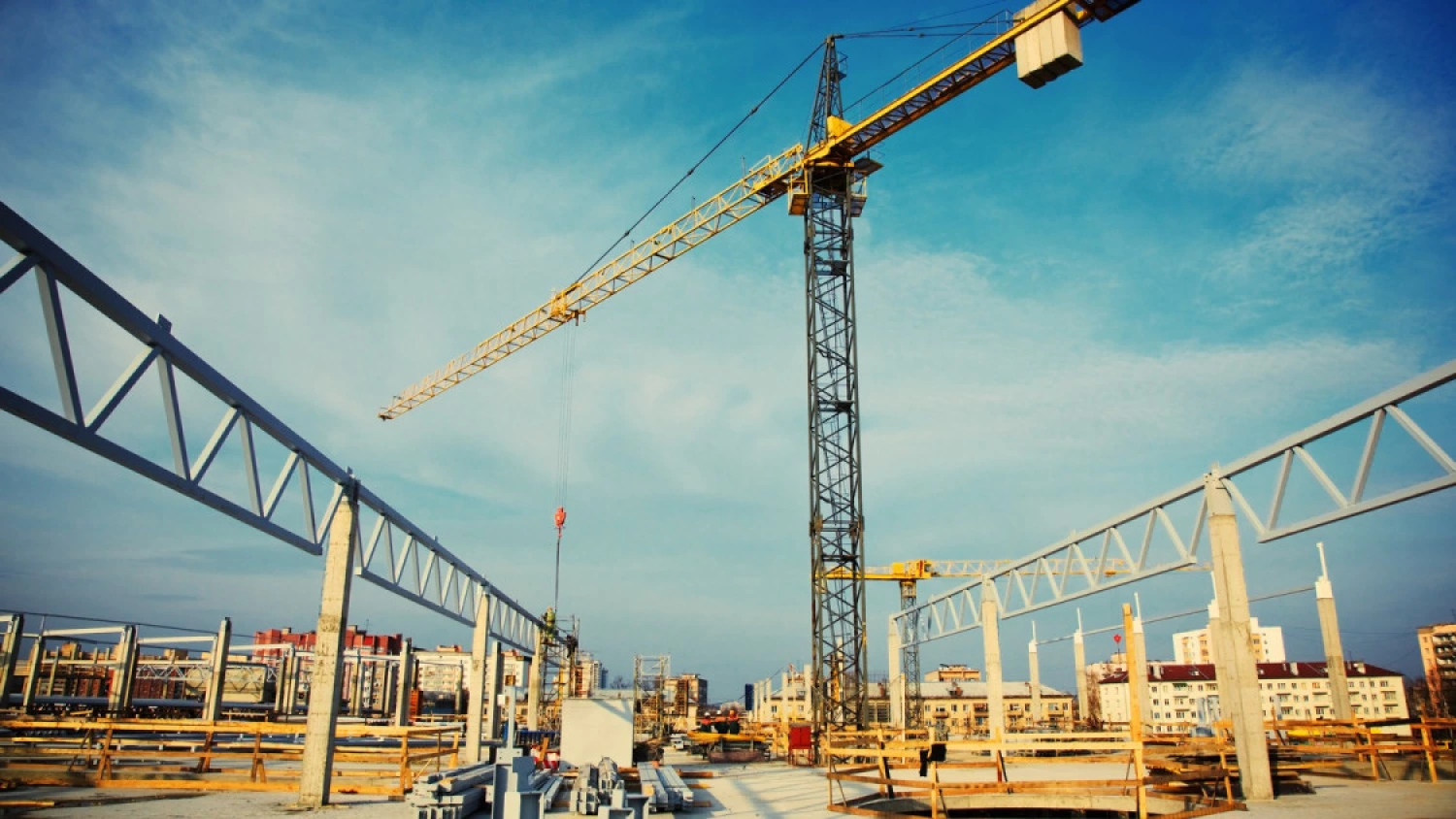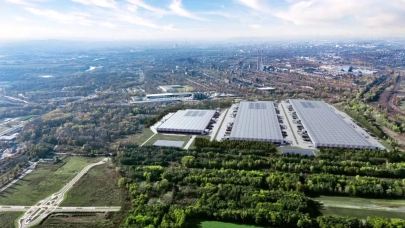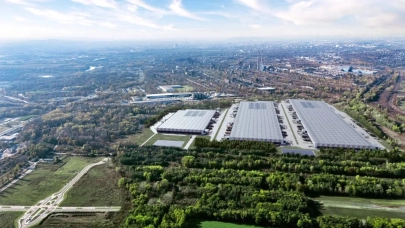
According to the State Employment Service, as of September 1, 2023, the number of vacancies in the construction industry exceeded the number of registered unemployed. Representatives of the largest developers in the capital speak of a shortage of workers. Olga Solovei summarised what is happening in the labour market in the construction sector of Ukraine in an article prepared by the Ukrainian Real Estate Club for Property Forum.
Staff shortage before a full-scale invasion
The first tangible wave of staff shortages in construction began in 2017, when Ukraine's visa-free regime with the EU came into effect, formally simplifying the travel of Ukrainians abroad. It was the outflow of personnel to Poland and other EU countries that became one of the main reasons for the shortage of workers. The second global reason why construction sites have experienced a shortage of labour is the unpopularity of such work among young people.
The labour shortage was growing even before the full-scale invasion began; with the start of active hostilities, construction sites were put on hold and the number of vacancies decreased significantly.
Since the beginning of the full-scale invasion, the number of vacancies in the construction sector has decreased by 5%. In pre-war 2021, the number of job offers in the construction sector on the specialized platform was 14.3 thousand. After the start of the full-scale invasion in 2022, the number of offers almost halved to 8.2 thousand.
Shortage + wage growth
After the construction sites were restarted and with the start of reconstruction in the liberated territories, the demand for construction workers began to gradually recover; currently, according to OLX Job, the number of open vacancies is 13.6 thousand, which is rapidly approaching the figures for 2021.
"The situation in the labour market depends on the region. In Kyiv, there is a gradual increase in the number of vacancies in 2023 (3 times compared to 2022), but even this number is only 40% of the pre-war level. The number of candidates has halved. In Lviv, there is an active increase in the number of vacancies, and a shortage of middle and managerial-level staff. In Kharkiv, the number of vacancies for small businesses and the public sector involved in the reconstruction is increasing, while the number of active candidates has significantly decreased," shares Olga Raikova, talent advisor at ULPM school.
"In general, according to the State Employment Service, construction is a fairly active professional field with a proportional balance of vacancies and resumes. And given the current proportion - 1 registered unemployed person for every 1 vacancy - we can safely predict that the shortage of specialists will only grow," comments Tetiana Pashkina, labour market expert.
Indeed, companies that work directly in the construction market confirm the trend of increasing staff shortages
But now the main reason for the shortage is not the outflow of labour abroad, but mobilization. At the beginning of the full-scale invasion, our publication conducted a survey among Kyiv developers on the number of mobilized workers, according to the data provided by the companies, in some places the number of those who joined the ranks of the Armed Forces or the TRO ranged from 25 to 60% of the total number of male employees.
"A significant percentage of skilled construction workers are currently defending Ukraine in the ranks of the Armed Forces, and there have been several waves during the full-scale invasion, during which companies were forced to say goodbye to their employees who went to defend their homeland. There is a real shortage of highly qualified personnel. Sometimes the market deficit in companies reaches 40%, which significantly affects the industry," says Oleksandr Nasikovsky, co-founder and managing partner of DIM Group, "This puts a certain burden on the construction industry and forces it to compete for personnel: financial working conditions, social package, additional ways of motivation.
"The full-scale war and the resulting mobilization to the ranks of the country's defenders led to a shortage of workers on construction sites," adds Anna Laevska, Commercial Director of Intergal-Bud. However, by re-staffing the construction teams last year, we managed to resolve this issue for some time. Speaking about the current situation, we have been observing an increasing shortage of workers since May. Currently, the main trends in the labour market are a shortage of construction workers, increased competition for available specialists and rising wages. As for the latter, wages have increased by 20% since May alone."
Indeed, after a temporary decline in wages in 2022, there is now a gradual increase. According to OLX Job, before the full-scale invasion, as of August 2021, the median salary was 18 thousand hryvnias (493 USD), a year later, in 2022, it dropped to 13,500 hryvnias (370 USD). Currently, the median salary, according to OLX Job, is 21 thousand hryvnias (575 USD). That is, it exceeds pre-war levels.
"With the resumption of work, which was gradual in all companies, we even received discounts from the pre-war level of payment. Now the situation has changed, and wages have not only returned to the previous level but have even increased. In the case of our company, it has increased by at least 15-20%. However, the case of Intergal-Bud is not indicative. We are one of the largest developers, and we have a considerable volume of simultaneous construction (currently up to 1 million square meters), so due to the volume of work, our payment is not growing so rapidly. Small companies have to pay 30-40% more than they did before February 2022," comments Anna Laevska.
"The cost of construction and installation work has already increased by more than 35% since the beginning of the year, which is due to both inflation and a lack of staff. In the future, I think we will see an increase of at least 5-7% in this category by the end of the year.
The staff shortage will increase in the short and long term
Despite the war, the construction market is recovering, work continues, and large developers are increasing their volumes. Therefore, the need for people will not diminish, and this is one of the biggest challenges for the market. Construction is mostly a male-dominated industry, although, amid the difficult situation with the search for workers and the overall economic situation in the country, we have seen some growth in interest in working on construction sites among women. Most often, these are professions related to painting and interior decoration.
The shortage of qualified construction workers is a national challenge because in a country where more than 170,000 residential buildings have been damaged or destroyed, where 19 airports, about 130 railway stations, and 3,400 educational and other facilities have been damaged, workers and qualified personnel are needed today.
To tackle the problem with personnel, Ukraine needs a system of motivation at the state level that would encourage young people to study for production specialities and support those who choose the construction industry for professional fulfilment, and it could be social motivation systems (social mortgage programs, for example) or additional financial incentives.
When the war is over, Ukraine will need even more construction workers. The need to rebuild the affected cities and towns, renovate housing, industrial buildings and other infrastructure will be enormous, and even the return of men from the front is unlikely to compensate for the surge in demand that will occur. Obviously, most construction will take place in the first year after the war. It will give a boost to other industries, as one job created in construction entails the creation of 6-7 new jobs in related industries.



